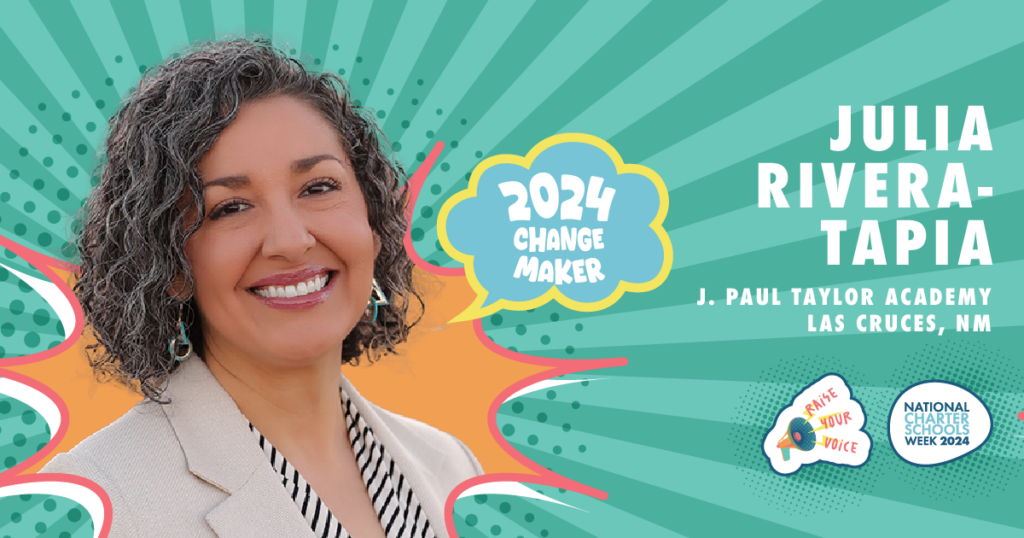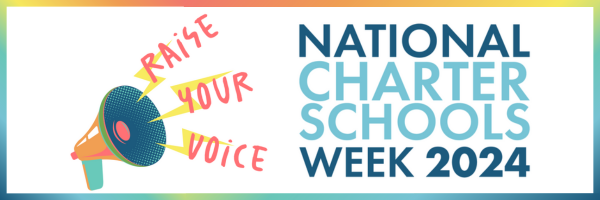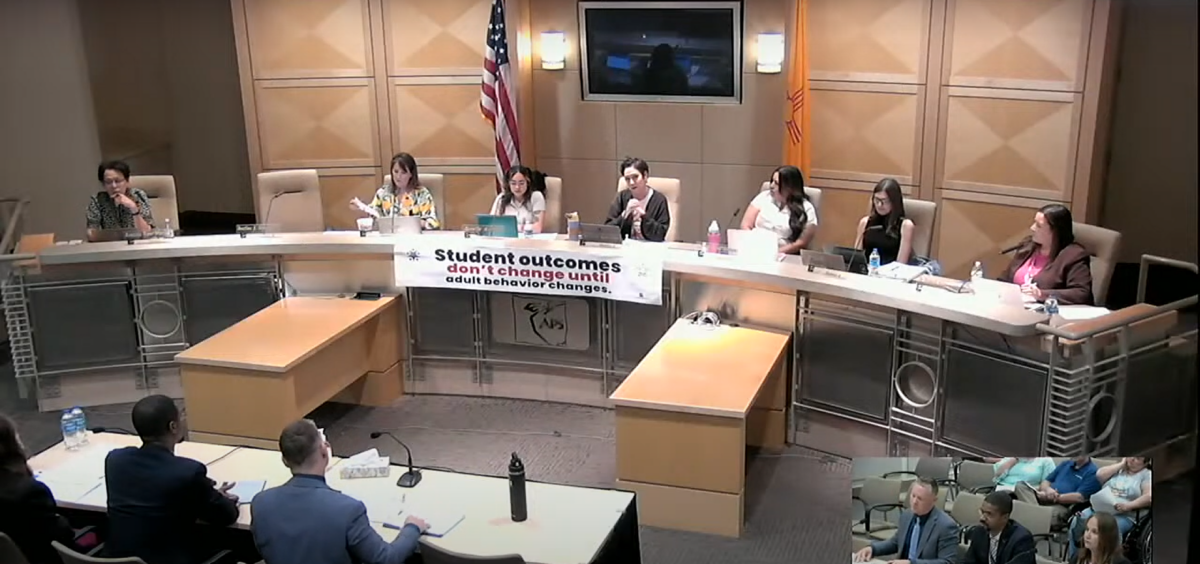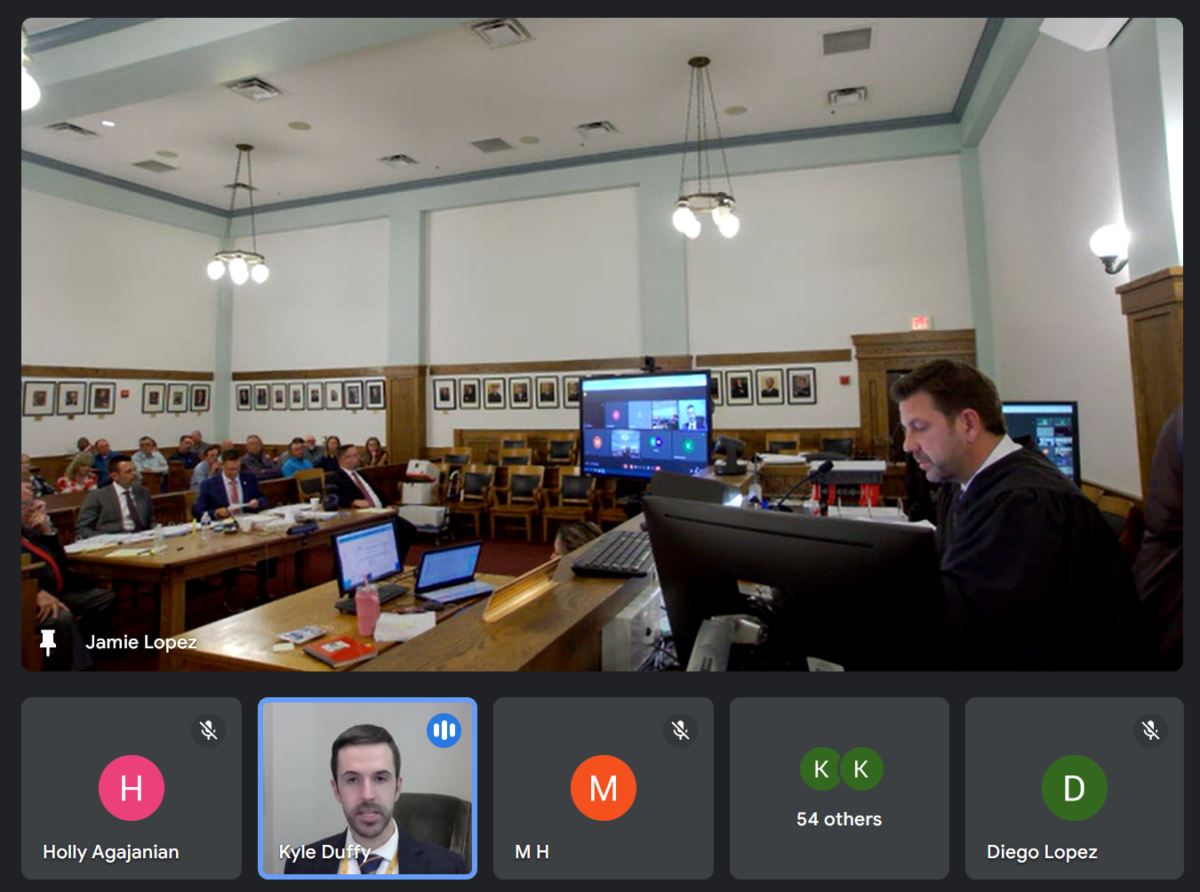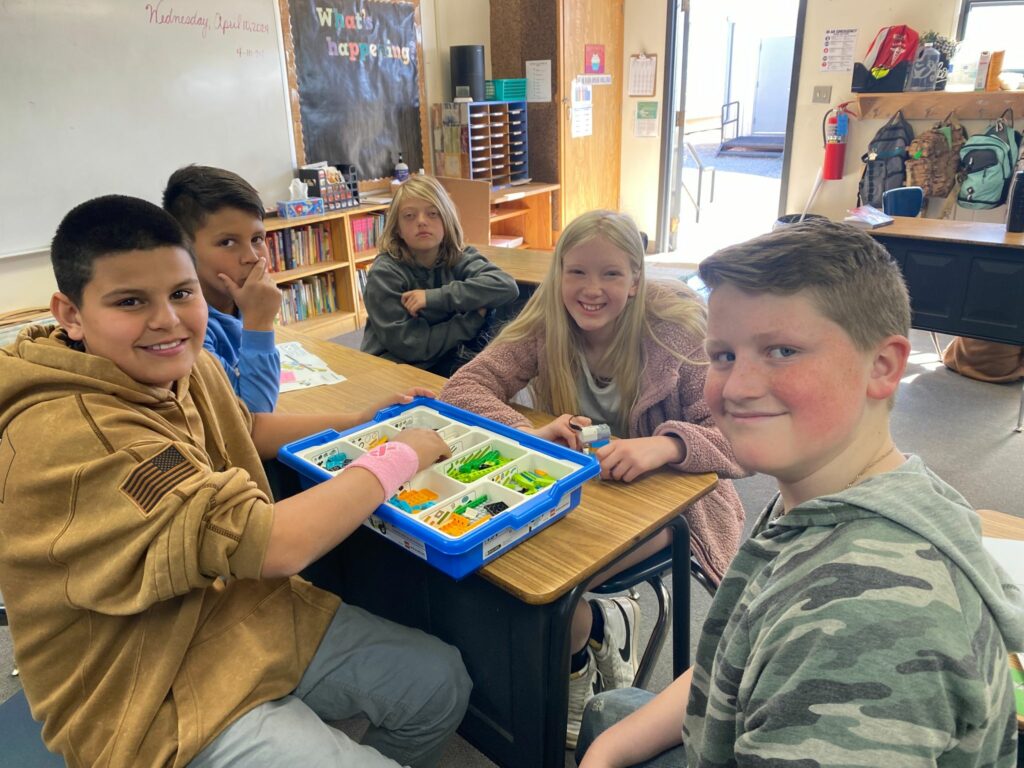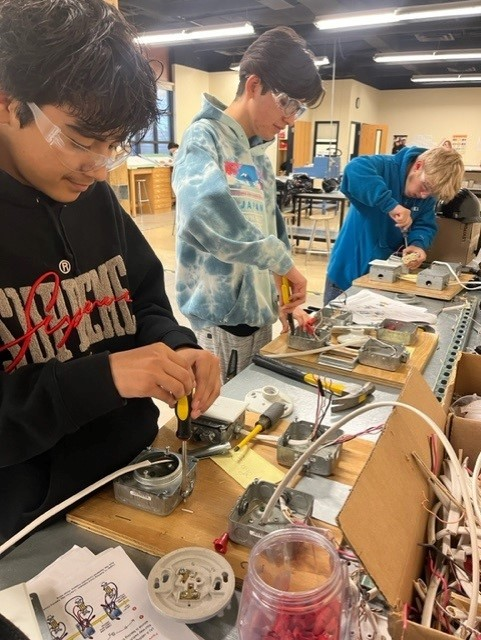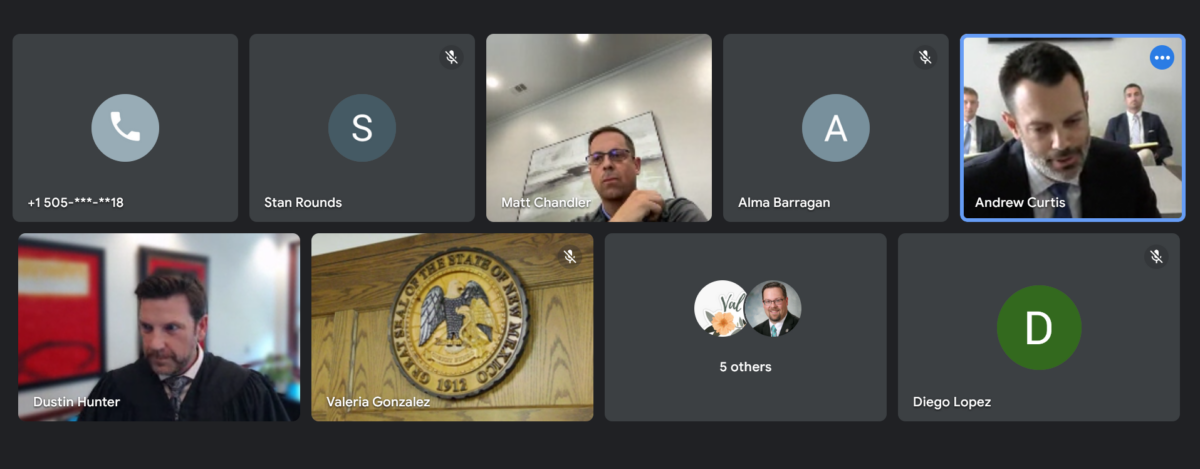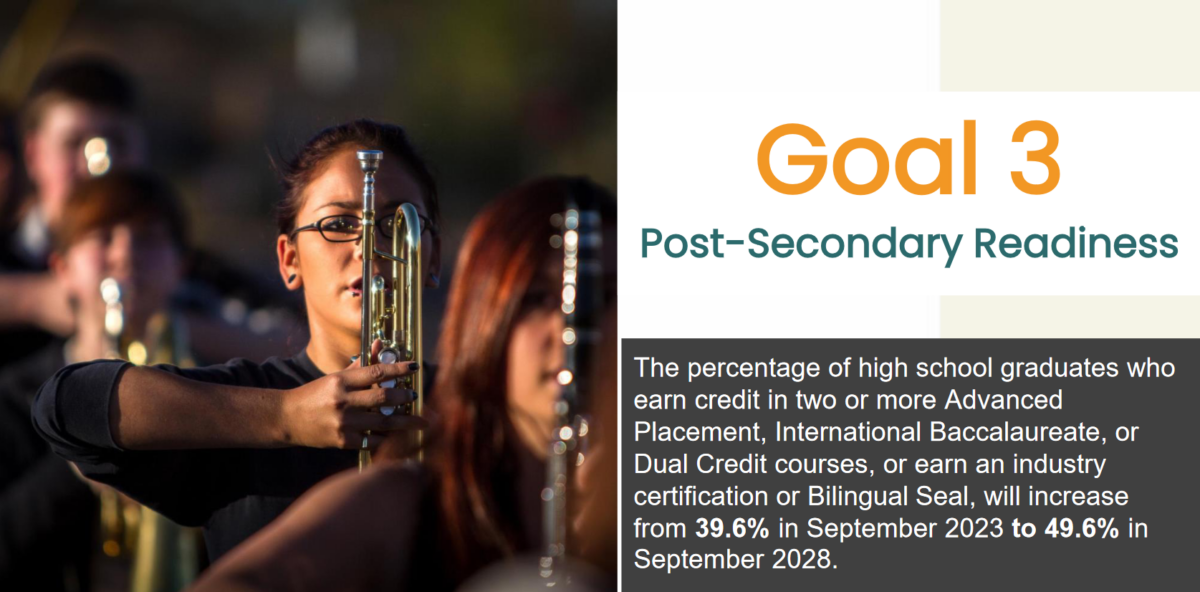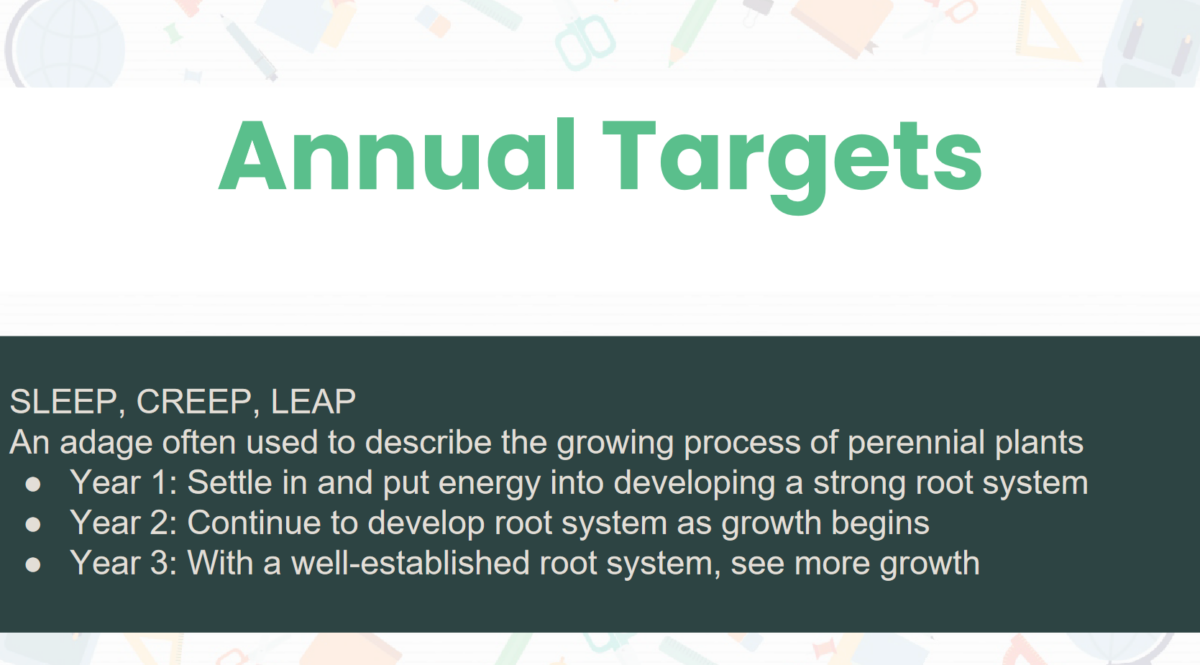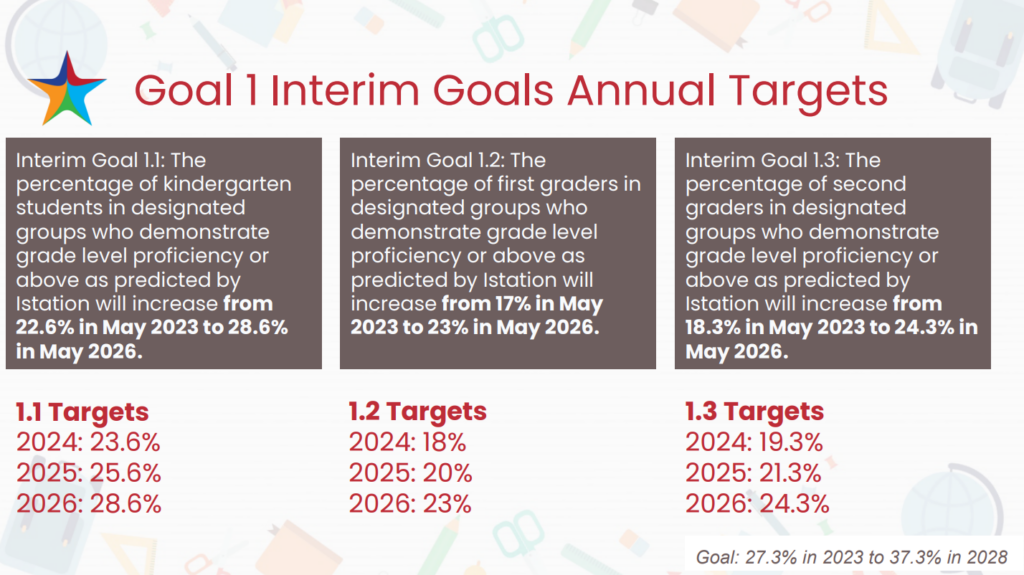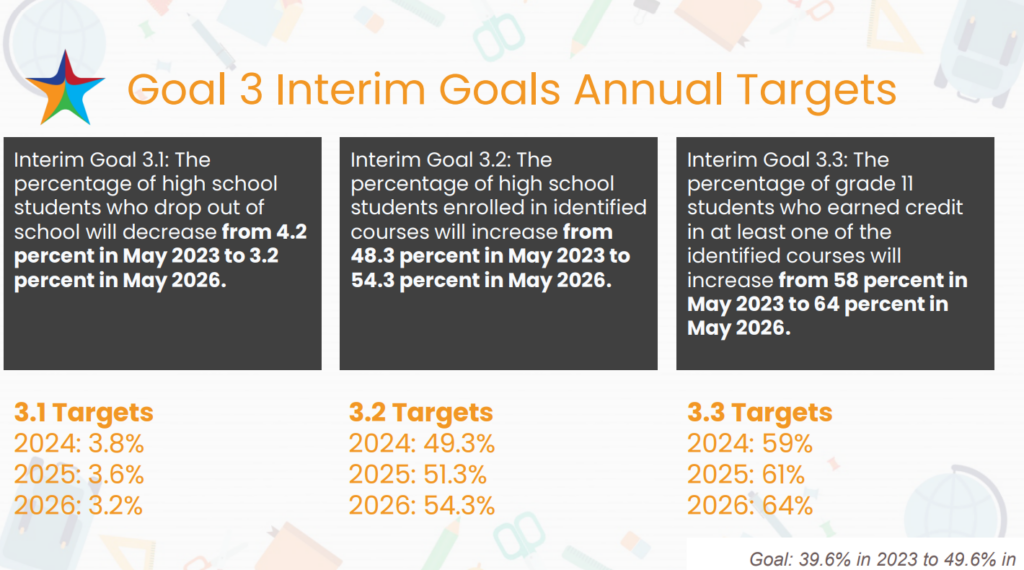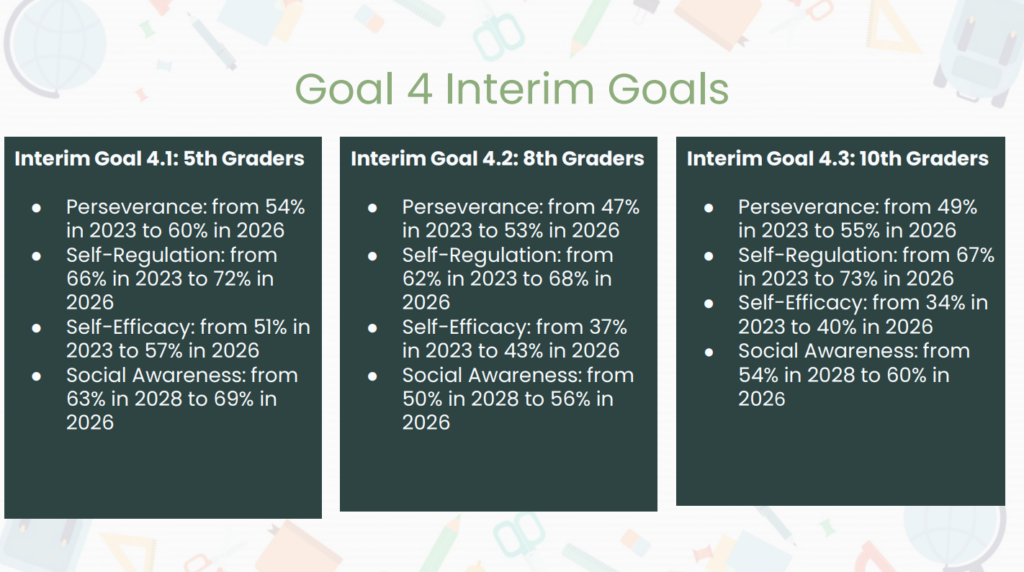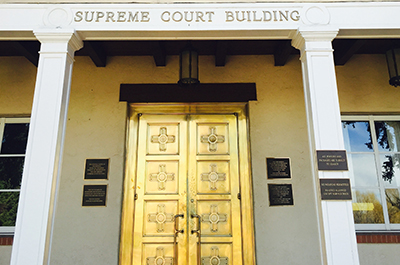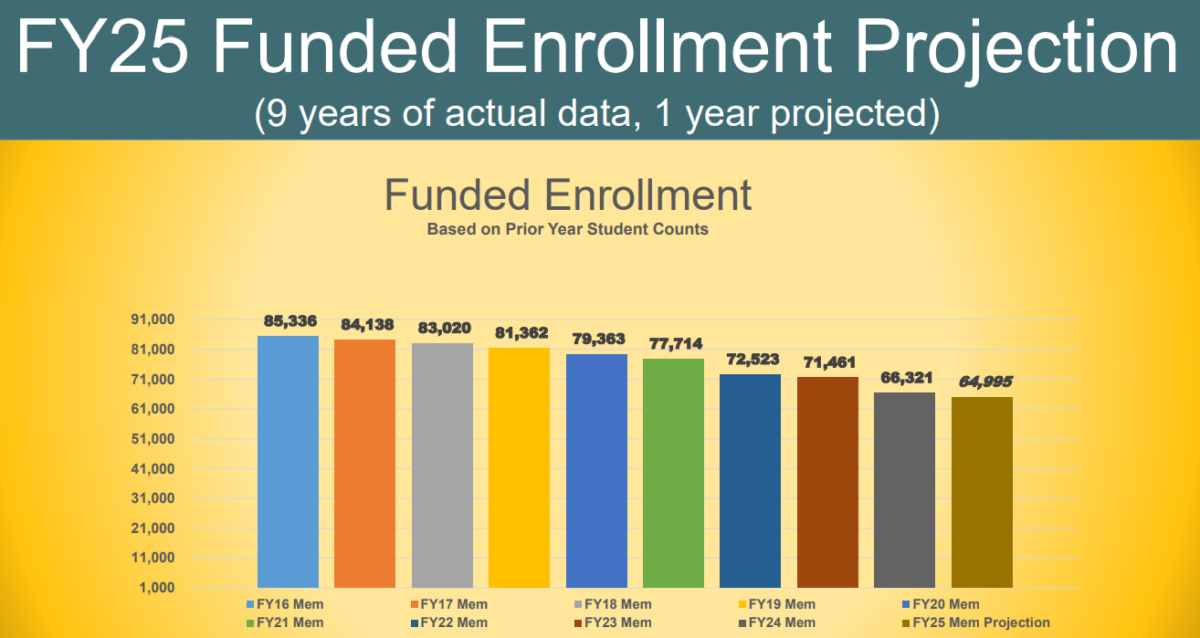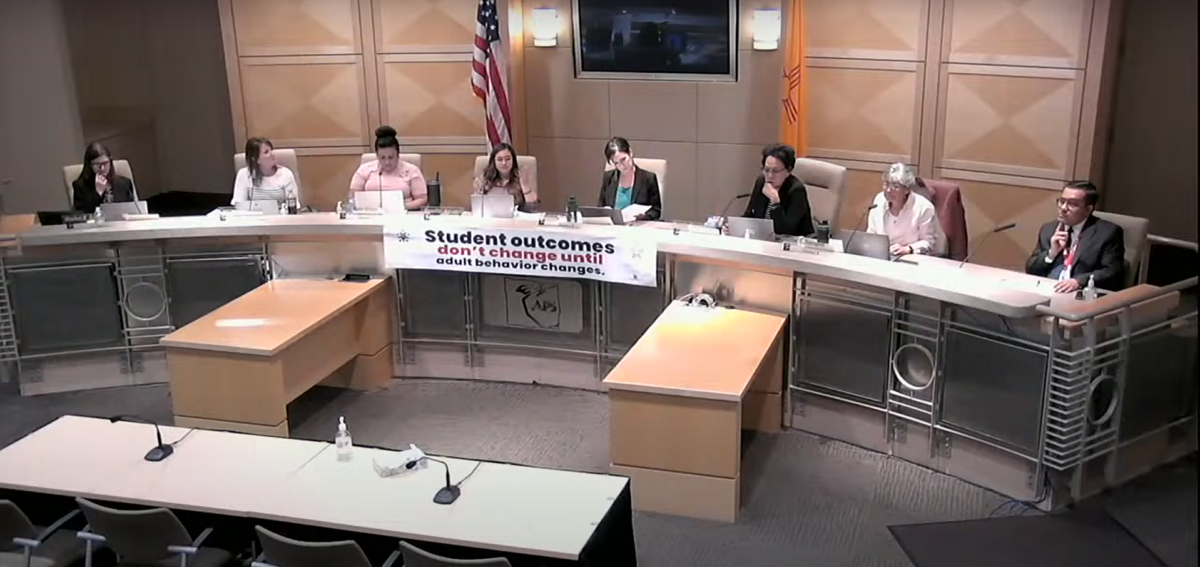As part of the transition to Student Outcomes Focused Governance (SOFG) , the Albuquerque Public Schools (APS) Board of Education recently began a structured assessment of its meeting dynamics and governance practices.
The APS Board has introduced a systematic approach to assess how board meeting time is used, focusing on the extent to which it addresses student outcomes and results. At the April 3 board meeting, the board evaluated their time and focus on the district’s goal of improving its student outcomes.
“Our board is monitoring and evaluating how we use our time as a board,” Board President Danielle Gonzales said, explaining that this new monitoring system will allow them to focus their work on improving student academic results.
In September, APS launched their new strategic plan: Emerging Stronger. This plan includes goals and guardrails, the goals seek to make improvements in literacy, math, post secondary success and student well being, and includes guardrails to keep the district on track. Guardrail 2 reads, “The board will not spend less than 50 percent of public meeting time monitoring student outcomes.”
How Much Time Does APS Spend Discussing Student outcomes?
Board Secretary Janelle Astorga is spearheading the effort of tracking the board’s time use. Her report showed that in the past few months, only a small fraction of the board’s time had been dedicated to progress monitoring and student outcomes.
The APS Board agreed that through all of November’s 150 minutes of board meetings, and the same in their 380 minutes of meetings in December, no time was spent focused on student outcomes.
In January, when new board leadership was elected the board spent time handling procedural votes required by New Mexico state law and parliamentary procedure; this legally required meeting took up 23 minutes where the board was unable to speak about student results, the time of this meeting was still recorded in their report. In total, Astorga reported 360 minutes of meetings and community engagements in January where 78 minutes were spent discussing student results. The APS board spent 22 percent of their time focusing on student results during this month. Astorga noted the significant increase from zero to 22 percent of their time.
In February, Astorga reported 501 minutes of APS meetings and community engagements where 118 minutes of their time was spent discussing student outcomes. During February, the board spent 24 percent of their time focusing on student results, Astorga noted that much of the board’s time was spent in executive session working to hire Gabriella Duran Blakey as the incoming superintendent.
“We’re moving along, our [percentage of time spent on student outcomes] keeps increasing,” she said.
In March, the board had 263 minutes of meetings and engagements, During the month, 88 minutes were spent focusing on student outcomes. Astorga said the APS board has received compliments about this month having one of the “best” and productive board meetings this year.
Evaluating Board Effectiveness
Alongside the time use analysis, the Board also engaged in a self-evaluation of its governance practices, employing a detailed rubric to assess their effectiveness in steering APS to improve student outcomes. The board’s work to improve outcomes is evaluated using four SOFG designations:
- Not Student Outcomes Focused
- Approaching Student Outcomes Focus
- Meeting Student Outcomes Focus
- Mastering Student Outcomes Focus.
Gonzales explained that the board’s goal is to keep their meetings and their work focused on the outcomes of students, and that the board needs to strive to master student outcomes focused on each of the six pillars.
1. Vision & Goals: Approaching Student Outcomes Focus
Board Evaluation Score: 10/30 points
The board discussed how they met the mark of 10 points because they adopted goals in collaboration with the superintendent that are SMART—specific, measurable, achievable, relevant, and time-bound. Each goal has a clear measure and timeline, ensuring focus and accountability. However, the Board has not yet fully integrated community members in the goal-setting process, which is necessary for achieving a “Meeting Student Outcomes Focus” score.
To advance to the next level, the Board plans to involve students, parents, staff, and community members more comprehensively in developing future goals.
2. Values & Guardrails: Meeting Student Outcomes Focus
Board Evaluation Score: 10/15 points
Scoring themselves at a 10, the board explained that they have established clear guardrails reflecting the community’s values, which set guardrails to keep the superintendent’s work aligned with SOFG goals. These guardrails are SMART and updated multiple times a year, according to Gonzales.
To progress to “Mastering Student Outcomes Focus,” the Board intends to deepen community involvement in the development process of guardrails and enhance the predictive quality of interim guardrails.
3. Monitoring & Accountability: Approaching Student Outcomes Focus
Board Evaluation Score: 10/30 points
The Board found that it devotes much of its time to monitoring district goals, investing over 10 percent of its meeting time in this activity. Because the board established a monitoring calendar and based the Superintendent’s performance evaluation on the progress towards these goals, the board scored themselves a 10.
Gonzales said the board is working to increase the time spent on monitoring to 25 percent to meet student outcomes more effectively and ensure that each goal and guardrail is monitored with the required frequency.
4. Communication & Collaboration: Approaching Student Outcomes Focus
Board Evaluation Score: 1/10 points
Because the board uses a consent agenda to streamline meeting processes and has made strides in categorizing the use of time in public meetings, they scored a one. However, the frequency of meetings and the duration often exceed the set standards, which impacts the focus and effectiveness of the discussions.
To improve, the Board will reduce the number of topics discussed in meetings and ensure that all meeting materials are finalized and shared several days before the meeting. Astorga had suggested time limitations on individuals and groups who present to the board without focusing on student results.
5. Unity & Trust: Meeting Student Outcomes Focus
Board Evaluation Score: 3/5 points
The Board operates with high attendance and adherence to ethical standards, with all members upholding the Board’s Ethics & Conflicts of Interest Statement. However, board members agreed there is room to enhance unity further by ensuring all members refrain from giving operational advice and fully recuse themselves from matters where there might be a conflict of interest.
To master this competency, the board agreed to review all policies at least once per board member’s term and align them more closely with the Board’s operational procedures.
6. Continuous Improvement: Approaching Student Outcomes Focus
Board Evaluation Score: 1/5 points
The Board is committed to continuous improvement, tracking the time spent on governance and the costs associated with it. However, the Board has yet to participate in a governance team training session which Gonzales said will be crucial for enhancing their focus on the goals.
The board agreed to organize and participate in governance training sessions and to conduct more frequent self-evaluations to better monitor and enhance their practices.
What comes next?
In response to the evaluative findings, the Board unanimously agreed to implement several strategic changes. The Board resolved to reformat the meeting agenda to prioritize items that have a direct impact on student outcomes. This new format will feature student-related discussions prominently at the beginning of each meeting, ensuring they receive the necessary attention and deliberation.
The board discussed enhancing their monitoring practices by adopting more rigorous methods to track the implementation and effectiveness of educational strategies. This includes setting clear targets for student achievement and regularly reviewing progress against these targets.
A large part of the meeting was dedicated to discussing how board members could improve their questioning techniques during presentations and reports. Gonzales said the goal is to encourage more strategic and outcome-focused questions that prompt detailed discussions on student progress and program effectiveness. The board plans to receive training on effective questioning to better scrutinize and support administrative actions and proposals.
The Albuquerque Public Schools Board of Education

